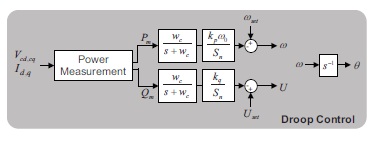- ALL COMPUTER, ELECTRONICS AND MECHANICAL COURSES AVAILABLE…. PROJECT GUIDANCE SINCE 2004. FOR FURTHER DETAILS CALL 9443117328


Projects > ELECTRICAL > 2017 > IEEE > POWER SYSTEMS
Proper modeling of inverter-based microgrids is crucial for accurate assessment of stability boundaries. It has been recently realized that the stability conditions for such microgrids are significantly different from those known for largescale power systems. In particular, the network dynamics, despite its fast nature, appears to have major influence on stability of slower modes. While detailed models are available, they are both computationally expensive and not transparent enough to provide an insight into the instability mechanisms and factors. In this paper, a computationally efficient and accurate reduced order model is proposed for modeling inverter-based microgrids. The developed model has a structure similar to quasi-stationary model and at the same time properly accounts for the effects of network dynamics. The main factors affecting microgrid stability are analyzed using the developed reduced-order model and shown to be unique for microgrids, having no direct analogy in largescale power systems. Particularly, it has been discovered that the stability limits for the conventional droop-based system are determined by the ratio of inverter rating to network capacity, leading to a smaller stability region for microgrids with shorter lines. Finally, the results are verified with different models based on both frequency and time domain analysis.
Load-Sharing Control Technique.
This paper concentrates on systematic approach for development of such high-fidelity reduced-order models with special emphasis on the physical mechanisms of fast variables participation in the dynamics of slow modes. The obtained reduced order model will be used to draw a number of practically important conclusions about the trends in microgrids stability. The key contributions of this paper are as follow: 1) A reliable and concise reduced-order model for microgrids is developed allowing for accurate stability assessment and uncovering the main factors affecting microgrids stability. It has been explicitly shown that the obtained stability conditions are unique for microgrids and cannot be directly explained using the example of large-scale power system. 2) The influence of fast degrees of freedom on system dynamics is properly quantified and the reasons for inadequacy of quasi-stationary (with respect to network dynamics) approximation are given. We demonstrate that it is the network dynamics that plays the main role in stability violation and neglecting it leads to overly optimistic stability regions. 3) Generalization of the proposed method to arbitrary sets of slow and fast degrees of freedom is presented and explicit form of reduced-order equations for microgrids with multiple inverters and arbitrary network structure is derived. The resulting equations contain dynamics of only local variables and are mathematically similar to coupled oscillators which allows for potential application of advanced stability assessment methods.
Network Configuration

Two loop Controller

Droop controller
